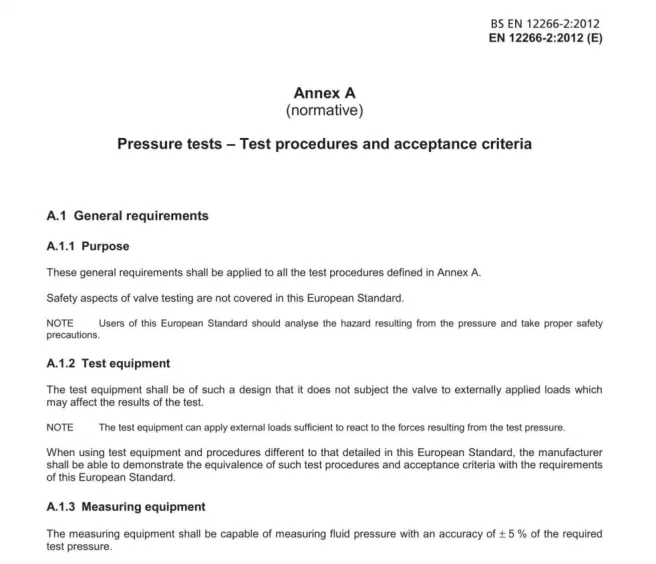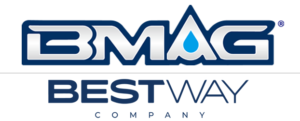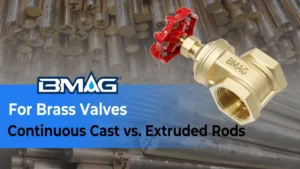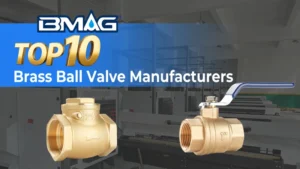Abstract
Valve life cycle testing, also known as durability or cycle testing, is a critical evaluation for a valve’s long-term reliability, especially crucial for frequently actuated brass valves. It validates the robustness of the valve’s design, materials, and manufacturing processes by simulating the thousands, or even tens of thousands, of opening and closing operations it may experience during its service life.
1. Purpose of Brass Valve Life Cycle Testing
Life cycle testing is not a mandatory production test for every valve but is rather a Type Test, typically conducted in the following scenarios:
- Design Validation: During the new product development phase, life cycle testing is used to verify the soundness of the structural design and material selection. It specifically assesses dynamic components such as the stem, seals, and actuation mechanism to ensure the valve can meet its expected service life.
- Reliability Assessment & Lifespan Prediction: To provide a reliability commitment for the product based on experimental data. Using real data from cycle tests, manufacturers can determine a theoretical service life. A service life factor, α (typically 0.8-0.9), is then applied based on the actual application scenario to calculate a guaranteed minimum lifespan. For example, if lab testing shows 10,000 failure-free cycles, a manufacturer might establish a shorter baseline for warranty purposes. The guaranteed minimum lifespan could be calculated as: 5,000 cycles * a service factor α (e.g., 0.8) = 4,000 cycles. The manufacturer would then commit to a guaranteed “4,000 failure-free actuations.”
- Wear Performance Evaluation of Critical Components: After the test, the valve can be disassembled for a visual inspection of key friction pairs, such as the seat rings, stem packing, and the surface of the ball/disc. This allows for an assessment of wear, deformation, or aging, which helps in predicting the valve’s service life. For instance, by disassembling the valve after 500, 1000, 1500, 2000, 2500, and 3000 cycles respectively to measure the degree of packing wear, a curve showing the relationship between actuation cycles and wear can be plotted. This allows for the extrapolation and prediction of the packing’s service life.
2. Standards and Requirements for Brass Valve Life Cycle Testing
There is no single, unified international standard that specifies the life cycle requirements for all brass valves.

Test requirements vary depending on the valve’s application field and type. International standards like EN 12266-2: “Industrial valves – Testing of metallic valves – Part 2: Tests, test procedures and acceptance criteria – Supplementary requirements” and API 598-2023: “Valve Inspection and Testing” only stipulate the test methods but do not mandate specific cycle counts.
3. Brass Valve Test Method and Procedure
Modern valve life cycle testing relies on a highly automated and integrated “Valve Torque, Actuation, Life, and Pressure Test Bench.” The standard procedure is as follows:
- Preparation:
- Sample Selection: A specified number of samples (typically 3-5) are randomly selected from the same production batch.
- Baseline Performance Test: Before cycling begins, each sample undergoes a complete performance test to establish a “zero-point” baseline. This includes visual and dimensional checks, shell and seat tests (per API 598 or EN 12266-1), and an initial operating torque test.
- Test Rig Setup & Working Principle:
- Multi-Functional Integrated Platform: The test is conducted on a platform that integrates torque, life cycle, pressure, and sealing tests. First, the valve under test is mounted on a specialized fixture, and the media lines and a high-precision torque sensor are connected.
- Pressure Loading: A high-pressure pump or air source applies the set test pressure to the valve cavity (media can be water, air, oil, etc., with a typical pressure range of 0-10 MPa, customizable). For specific requirements, the rig can also integrate a hot and cold water circulation system.
- Automated Control: The entire process is fully automated and controlled by a PLC or computer system. The operator sets the parameters, such as the number of cycles (up to 100,000+), actuation speed (e.g., 1-10 cycles/minute), and test pressure, via a control interface.
- Execution & Real-time Monitoring:
- Automated Cycling Operation: Once started, an electric or pneumatic actuator drives the valve through “full open → full close → full open” cycles at the set rate (typically 4-10 cycles/minute).
- Real-Time Data Acquisition: This is a key advantage of modern testing. During every single cycle, the system:
- Measures Torque in Real-Time: A high-precision torque sensor (accuracy up to ±0.5%) records and plots a complete torque curve.
- Monitors Pressure: A pressure sensor ensures the test pressure remains stable at the set point.
- Counts Cycles Automatically: The system automatically logs the number of valid cycles.
- Detects Sealing Performance: The system can automatically check for internal and external leakage at predetermined cycle intervals or after each closure.
- Safety Protections: The test bench is equipped with multiple safety features, including over-pressure, over-torque, and emergency stop functions, ensuring a safe process and automatically halting the test in case of valve seizure or severe leakage.
- Completion and Final Evaluation:
- Data Output: The test automatically stops upon reaching the preset number of cycles. The system generates a detailed test report containing all process data, including torque values for each cycle, pressure fluctuations, total cycles, and leakage information.
- Final Performance Test: The baseline tests from the preparation stage are repeated, and the results are compared with the initial data.
- Disassembly and Inspection: The valve is completely disassembled for a thorough visual inspection of all internal parts, particularly:
- Ball/Disc Surface: for scratches, plating delamination, or pitting.
- Seat Rings (PTFE/EPDM, etc.): for wear, compression set, deformation, or aging.
- Stem and Stem Seals (O-rings/Packing): for wear, twisting, or fracture.
4. Key Evaluation Metrics & Failure Criteria
The pass/fail determination for a life cycle test is based on the following key points:
- Sealing Performance: This is the most critical criterion. During or after the test, both external leakage (from the body, bonnet, or stem) and internal leakage (through the seat) must remain within the limits specified by the standard. Any leakage exceeding these limits constitutes a failure.
- Operating Torque: With real-time data acquisition, the evaluation is more sophisticated. It involves not just comparing initial and final torque, but also analyzing the torque trend over the entire test duration. Sudden spikes in torque or a continuous and significant increase (e.g., exceeding the initial value by 50%-100%) indicates severe internal wear, galling, or seal damage and can be judged as a failure.
- Structural Integrity: Throughout the test, no component of the valve (such as the stem, handle, or stop pins) shall fracture, permanently deform, or become dislodged.
- Internal Wear Condition: After disassembly and inspection, if critical components show severe wear that could lead to imminent failure, the valve may still be deemed a failure even if it narrowly passes the final seal test.
Table of Contents
ToggleThe BMAG Brass Valves: Validated Through Rigorous Testing
It is the combination of these demanding tests—material integrity, structural strength, and long-term durability—that elevates a standard component into a truly reliable product.
At BMAG, this rigorous testing philosophy is not merely a standard to be met; it is the core of our development process. Every valve engineered and developed under the BMAG brand is validated on advanced, PLC-controlled life cycle test rigs. This enables us to subject our products to exhaustive testing that often exceeds industry norms, all while capturing precise, real-time performance data.
This unwavering commitment ensures that our products deliver unparalleled reliability, consistent performance, and a long service life. If you require robust brass valves engineered for endurance and proven through the industry’s most advanced testing methodologies, we invite you to connect with our team to discuss your specific requirements.






